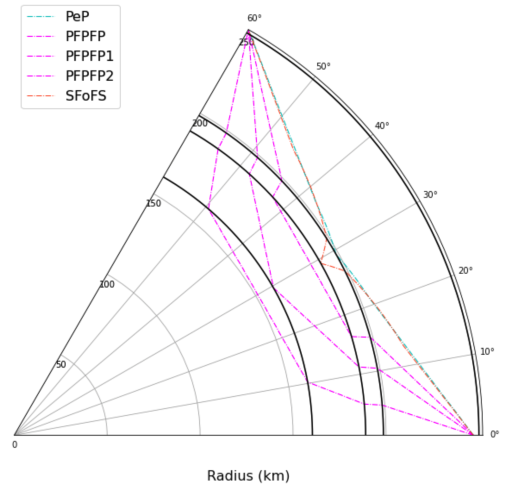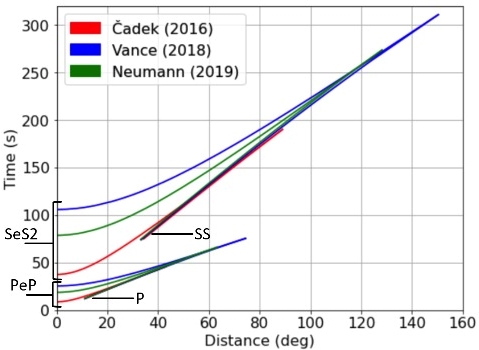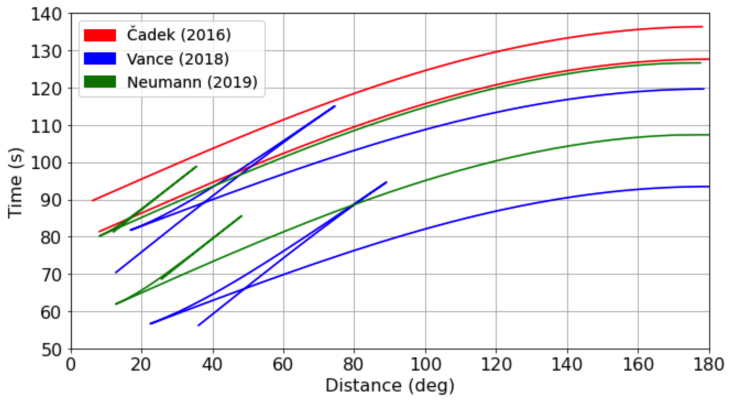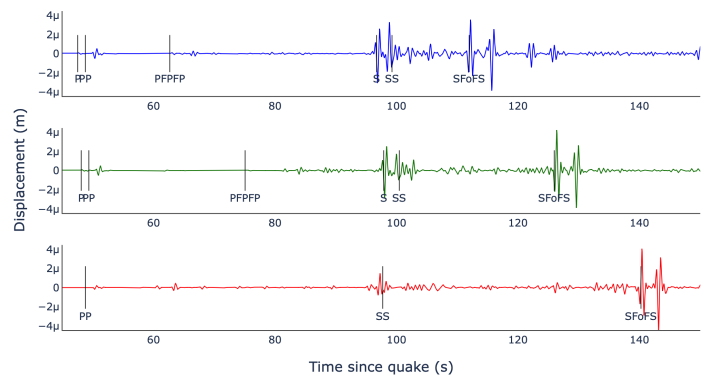Preparing for Enceladus: What can seismology reveal?
- University of Bristol, Earth Sciences, United Kingdom of Great Britain – England, Scotland, Wales (kat.dapre@bristol.ac.uk)
Enceladus has been recently identified as the second-highest priority target of Flagship-class missions in the coming decade [1], marking a culmination of growing scientific interest in the small yet geologically active icy moon. While Enceladus is now widely believed to contain a global subsurface ocean beneath its icy exterior, the relative radii and compositions of its ice shell, ocean, and rocky core are still uncertain. Varied methodologies have previously been used to construct models of interior structure, and suggest a total 50-70km of H2O, and 200-180km of rock. Ongoing debates discuss the depth of the ice/water transition and the extent of a potential porous or unconsolidated core; both these parameters have important implications for thermal energy budgets, ocean composition, and the search for extraterrestrial life.
A seismological mission to Enceladus would gather data to interpret interior structure and interface depths; the proposed Orbilander mission features a seismometer in its landed payload [2]. Seismology on Enceladus benefits from reliable anticipated seismic sources at its south pole, with extensive faulting in the Tiger Stripe Fractures (TSFs) which could be reactivated by tidal forcing [3], and venting of the subsurface ocean into space as plume activity through these fractures [4]. We simulate the seismic response of three proposed interior structures and assess our ability to distinguish between these using a single landed seismometer.
Figure 1: Representation of the three models selected for this study and the thicknesses of each layer presented therein.
Three structural models were selected from existing literature for interrogation, as displayed in Figure 1 [5,6,7]. Some simplifications are made for initial seismic modelling: holding seismic velocity constant in each layer; assuming lateral heterogeneity for one-dimensional computation; and discounting attenuation using fully elastic modelling. We locate the seismic source at the south pole to reflect likely seismic activity at the TSFs.

Figure 2: Phase naming in icy ocean worlds as set out by Stähler et al. (2018) [8]. Lowercase 'e' and 'o' denote reflections from the base of the ice and ocean, respectively. P waves travelling through the ocean are labelled as 'F', and through any depth of the rocky core as 'P' to distinguish from a metallic core composition.
Initial ray theoretical travel time predictions are conducted using the TauP Toolkit [9] in order to identify key phases to focus on in later modelling stages, and results are displayed in Figures 3 and 4. Transmitted phases in the ice shell are shown to terminate at shorter distances in a thinner shell, while ice shell thickness strongly affects the delay time between direct phases and those reflected once from the ice/ocean boundary. Meanwhile, the existence of a porous upper core layer, under the current assumed sharp transition to the consolidated central core, produces core multipathing, while the thickness of this layer controls the separation in distance and time between core-underside reflected phases.

Figure 3: Ray theoretical ice shell phases.

Full wavefield simulations were also carried out using the axisymmetric spectral element modelling tool AxiSEM [10]. This allowed for incorporation of source amplitudes and attenuation into the model. We used a dominant frequency of 2Hz and a source magnitude of Mw ~2.6 as suggested by Earth analogue studies and estimated tidal energy budgets [3,11]. We clearly observe arrivals sampling the ice shell such as S, SS, and SFoFS, and at large distances core-transmitted phases such as PFPFP can be observed before the higher-amplitude ice shell phases arrive. The location of a landed seismometer will affect which phases can be recorded; the value of detecting core phases, for which the seismometer must be far from the source, must be weighed against other mission priorities such as sufficient plume fallout rates.

Figure 5: Three traces at 45 degrees from source, filtered to remove the dominant surface wave signal.
We further adapt the above models to account for attenuation of seismic energy in the ice shell and rocky core. Firstly, we consider temperature-dependent attenuation in ice Ih, as characterised mathematically in previous studies [12] and compared with measurements of quality factor in terrestrial glaciers, where temperatures can approach those found at Enceladus' south pole [13]. Attenuation quality factors calculated for Enceladus’ ice shell reach minima of around 100, occurring at the base of the ice shell, which is sufficiently high that ice shell asymmetry is likely to constitute greater uncertainty. Additionally, we calculate attenuation in the upper portion of the rocky core based on a maximum predicted porosity of 30% [14]. The introduction of attenuation to the models primarily serves to decrease the amplitudes of phases arriving at short times and distances from the source, particularly in models with thinner ice shells, where higher-temperature and therefore more attenuative ice is closer to the surface; core phases appear to be largely unaffected.
References:
[1] NASEM (2022) Origins, Worlds, Life: A Decadal Strategy for Planetary Science and Astrobiology 2023-2032. [2] MacKenzie, S. M. et al. (2021) Planet Sci. J. 2(2), 77. [3] Olsen, K. G. et al. (2021) JGR: Planets 126, e2021JE006862. [4] Spencer, J. R. et al. (2018) Enceladus and the Icy Moons of Saturn, 163-174. [5] Čadek, O. et al. (2016) Geophys. Res. Lett. 43, 5653-5660. [6] Vance, S. D. et al. (2018) JGR: Planets 123, 180-205. [7] Neumann, W. and Kruse, A. (2019) ApJ 882, 47. [8] Stähler, S. C. et al. (2018) JGR: Planets 123, 206-232. [9] Crotwell, H. P., Owens, T. J., and Ritsema, J. (1999) SRL 70, 154-160. [10] Nissen-Meyer, T. et al. (2014) Solid Earth 5, 425-445. [11] Hurford, T. A. et al. (2020) Icarus 338, 113466. [12] Cammarano, F. et al. (2006) JGR 111, E12009. [13] Peters, L. E. et al. (2012) JGR 117, F02008. [14] Roberts, J. H. (2015) Icarus 258, 54-66.
How to cite: Dapré, K. and Irving, J. C. E.: Preparing for Enceladus: What can seismology reveal?, Europlanet Science Congress 2022, Granada, Spain, 18–23 Sep 2022, EPSC2022-1072, https://doi.org/10.5194/epsc2022-1072, 2022.

